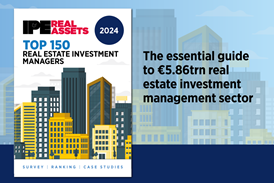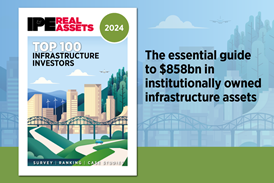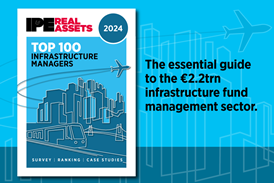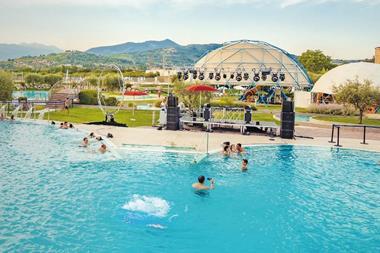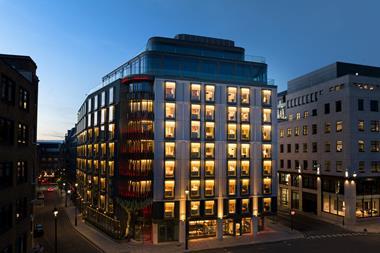Almost half of real estate imvestors active in the European arena intend to increase their acquisition volumes in 2016, a CBRE survey released on the second day of MIPIM has found.
Almost half of real estate imvestors active in the European arena intend to increase their acquisition volumes in 2016, a CBRE survey released on the second day of MIPIM has found.
Some 48% of all surveyed expect their purchasing activity to be higher than last year, compared with just 15% who expect to be less active. The survey found 43% also expect their selling activity to increase, indicating a buoyant and liquid real estate investment market for the region in 2016.
'There were a few stand-out themes in our survey this year, but the most interesting, to my mind, is investors’ purchasing activity,' commented Jonathan Hull, managing director of investment properties, EMEA at CBRE. 'Almost 85% of respondents expect their purchasing activity in 2016 to remain higher or the same as last year. This result, taken alongside similar figures for investors’ selling intentions, indicates that we are set for another year of strong investment activity.'
Hull continued: 'Overall however, there was much less agreement amongst respondents on what constitutes the most attractive market and preferred investment strategy. As differences in opinion are what make a market, this would suggest that 2016 will be an interesting time in real estate across the EMEA region.'
Risk averse
Despite the stated commitment to real estate investment, one notable change highlighted by the survey is a decline in investor appetite for risk. After three years of diminishing popularity, prime or core assets are back on the agenda. The proportion of investors who see prime or core assets as the most attractive part of the market has jumped from 29% last year to 41% in 2016. This is partly explained by investors’ concerns over economic issues. When asked the question 'What poses the greatest threat to property markets in 2016', global economic weakness was seen as the greatest threat (31%), with domestic economic problems (14%) a distant second.
Diverging investor views were prevalent in the responses given for the most attractive country for real estate investment. Germany was the most frequent choice as investors’ preferred destination, with 17% of all responses. The UK was in close second place with 15.1%, followed by Spain (10.2%), Netherlands (9.9%), France (9.2%) and Poland (9.2%). More importantly however, is the fact that this was by far the closest result of any of CBRE’s seven surveys, with many more markets coming into the mix this year.
CEE on the rise
There was also a big uplift in interest in Central and Eastern Europe (CEE). When taken as a group, CEE markets saw their proportion of preference rise from 6% in 2015 to 23% this year. This can partly be explained by investors’ continued “search for yield”. In the second half of 2015 prime yields in continental Western Europe fell very sharply and this has resulted in the yield gap between CEE and Western Europe increase markedly, raising CEE’s attractiveness to real estate investors.
At a city level, London retained its most favoured status, with 15.1% of all investors favouring the UK capital, but the gap to other cities is closing. Madrid came second with 12.2%, closely followed by Paris (11.6%), Berlin (10.8%), Amsterdam (7.3%), Warsaw (7.0%), Milan (4.7%), Budapest (2.9%), Prague (2.7%) and Munich (2.4%).
Across the more traditional sectors, offices remained the favourite asset type with 37% of the responses. However it was residential assets which saw the biggest increase in investor interest, growing from 5% of preferences in 2015 to 12% in 2016. Retail also fared well, and the recovery of consumer confidence and consumer spending has resulted in the proportion of respondents choosing retail increasing from 22% in 2015 to 27% in 2016.
The search for yield, as mentioned with regard to CEE, was also apparent in respondents’ answers to the 'alternative' sector. 56% of all respondents were already invested in one or more alternative sectors, and 57% were actively looking in one or more of these sectors. Real estate debt is the segment that currently has the most market penetration with over 30% of investors already having some exposure and 22% actively looking for further investment. Student Housing was the segment which attracted the most new interest. 20% of respondents already have investments in this area, with most of these seeking further exposure. However, a further 13% of respondents are looking to invest in student housing for the first time.
